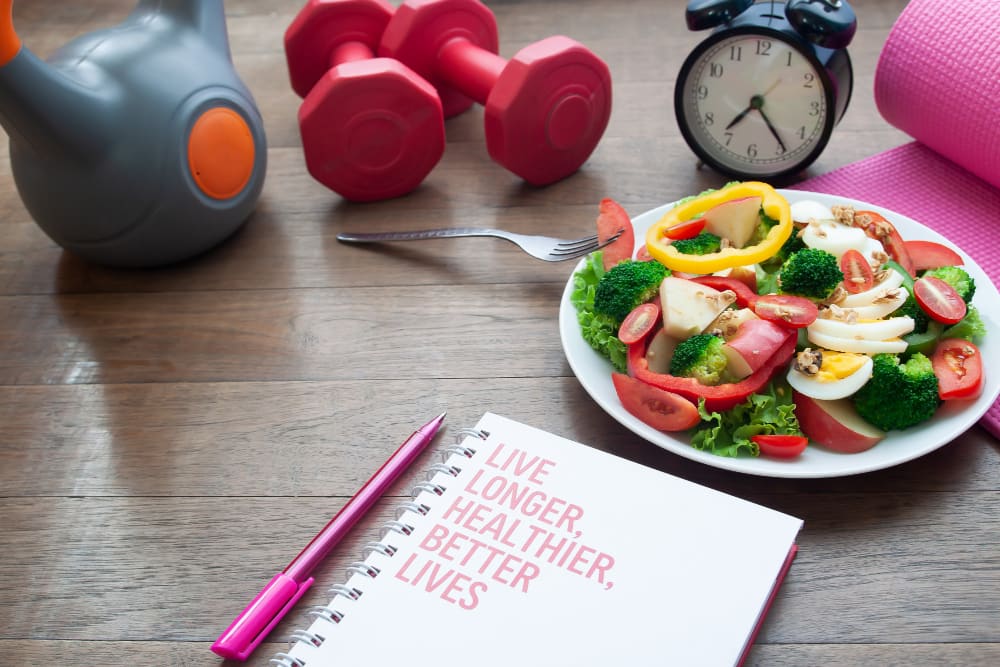Content
- Understanding Buccal Fat Removal Recovery Time: What to Expect
- Recovery Timeline
- Factors Affecting Recovery Time
- Tips for a Smooth Recovery
Understanding Buccal Fat Removal Recovery Time: What to Expect
Let's face it, achieving those sharp cheekbones we see on celebrities can be tempting.
Buccal fat removal has become a popular procedure to achieve a more sculpted look.
But before you dive in (pun intended!), understanding the recovery process is key.
Why Recovery Time Matters?
Think of recovery as the bridge between your dream cheekbones and getting back to your fabulous self.
It's about knowing what to expect, from a little "chipmunk cheek" situation (don't worry, it's temporary!) to when you can unleash your inner social butterfly again.
The Buccal Fat Breakdown: What You Need to Know
What are Buccal Fat Pads?
Imagine tiny pillows tucked inside your cheeks.
Those are your buccal fat pads. They add volume and youthful fullness to your face.
But as we age, these pads can sometimes contribute to a rounder appearance.
How Does Buccal Fat Removal Work?
Buccal fat removal is a minimally invasive procedure where a surgeon removes a portion of these fat pads through small incisions inside your mouth.
It's kind of like a tiny liposuction for your cheeks!

Recovery as Part of the Journey
So, how long will it take to feel like your old self again?
Here's the thing: recovery isn't a one-size-fits-all situation.
Several factors can influence your personal timeline.
Factors Affecting Your Recovery Time:
- Your Body's Healing Powerhouse: We all heal at different paces. Some folks bounce back quicker, while others might need a little more time.
- The Extent of Buccal Fat Removal: The amount of fat removed can impact swelling and recovery duration.
- Following Doctor's Orders: Listen to your doctor! Sticking to their recovery plan (think: soft food diet and gentle icing) can significantly speed things up.

Recovery Timeline
Alright, so we talked about the amazing world of buccal fat removal and why understanding recovery is key.
Now, let's dive into the nitty-gritty: what to expect during each stage of your journey to sculpted cheekbones.
Remember: This is a general timeline, and your personal experience might differ slightly.
Think of it as a roadmap, not a rigid itinerary.
First Few Days: Hello Swelling, Goodbye Solid Food (Days 1-3)
Imagine this: you wake up after your procedure, and your cheeks feel a bit...puffy.
Like you just enjoyed a delicious chipmunk convention (don't worry, it's temporary!).
This swelling is totally normal and peaks within the first 48 hours.
Here's what you can expect:
- Swelling: It might feel a bit tight and uncomfortable, but rest assured, the swelling will gradually subside.
- Soreness: You might experience some tenderness in the cheek area.
Your doctor will prescribe medication to manage any discomfort.
- Dietary Restrictions: Solid foods are a no-go for now.
Stick to a soft food diet like mashed potatoes, yogurt, and smoothies.
- Gentle Icing: Applying a cool compress to your cheeks can help reduce swelling.

Pro-Tip: Stock up on comfy pillows! Sleeping with your head elevated can help minimize swelling.
First Week: Farewell Chipmunk, Hello Soft Foods (Week 1)
The swelling should start to noticeably decrease during this week.
You might still feel a bit tight, but hey, progress is progress!
Here's the lowdown:
- Reduced Swelling: The chipmunk cheeks are slowly fading, revealing a more sculpted look.
- Dietary Shift: You can slowly transition back to softer solid foods like scrambled eggs and cooked vegetables.
- Bruising: Some mild bruising might appear around the incision sites, but it should fade within a few days.
- Gentle Activity: Light walks and gentle stretches are okay, but avoid strenuous workouts for now.

Weeks 2-4: Almost There! (Weeks 2-4)
The swelling should be mostly gone by now, and you're probably feeling much closer to your pre-procedure self.
Here's what you can expect:
- Minimal Swelling: Any remaining puffiness should be barely noticeable.
- Dietary Freedom: You can (and should!) enjoy all your favorite foods again.
- Return to Activities: You're good to go for most activities, including exercise.
Just listen to your body and avoid anything too strenuous.

Months 1-6: The Grand Finale (Months 1-6)
This is where the magic happens!
The final sculpted look of your cheekbones will continue to emerge over the next few months.
Here's what to expect:
- Gradual Refinement: As swelling completely subsides, your final results become more evident.
- Long-Term Outcome: Enjoy your new, sculpted cheekbones! The results of buccal fat removal are typically long-lasting.

Factors Affecting Recovery Time
So, we've painted a picture of the recovery journey, but remember, everyone heals at their own pace.
Just like that marathon you aced (or maybe that time you bravely tried rollerblading?), your body will recover from buccal fat removal in its own unique way.
Here's what can influence how long it takes to achieve those sculpted cheekbones:
1. Your Body's Healing Hustle:
We all have that one friend who bounces back from a cold in a day, while others (ahem, maybe ourselves sometimes) take a little longer.
Genetics play a role in how quickly your body heals from any surgery, including buccal fat removal.
Tips to Optimize Healing:
- Listen to your body: Don't push yourself too hard, especially in the first few days.
- Rest and Relaxation: Your body needs time to repair itself.
Catch up on those Netflix shows and cozy nights in!
- Nourish Your Body: Eating a healthy diet rich in fruits, vegetables, and whole grains will give your body the building blocks it needs to heal.

2. The Surgeon's Skill and the Scope of Surgery:
Think of your surgeon as your artistic partner, sculpting your dream cheekbones.
Their technique and the amount of fat removed can impact your recovery time.
Partial vs. Full Buccal Fat Removal:
- Partial removal: This typically involves removing a smaller amount of fat, leading to a shorter recovery time.
- Full removal: Removing more fat can result in a more dramatic change but might also extend your recovery period.

3. Pre-Existing Health Conditions:
Underlying health issues like chronic illnesses or autoimmune diseases can affect healing time.
Be upfront with your doctor about any pre-existing conditions during your consultation.
Managing Health Conditions During Recovery:
- Open communication: Discuss your health concerns with your doctor and follow their specific recovery plan.
- Medication adjustments: Certain medications might need to be adjusted before or after surgery.

4. Post-Operative Care is Key:
Imagine this: you get a brand new smartphone, but you don't read the instructions.
Following your doctor's post-operative care plan is crucial for a smooth and speedy recovery.
Sticking to the Plan:
- Medications: Take your prescribed medications exactly as directed to manage swelling and discomfort.
- Dietary restrictions: Avoid certain foods that could irritate the surgical site.
- Activity limitations: Take it easy on strenuous exercise for a set period.
Tips for a Smooth Recovery
Alright, you've got the roadmap to sculpted cheekbones, but a smooth journey needs a little cruise control, right?
Here are some tips to navigate your recovery like a pro and get you to those cheekbone goals feeling fantastic.
1. Pain Management: Keeping Things Chill
Post-operative discomfort is normal, but there's no need to be a superhero.
Your doctor will prescribe medications to manage any pain you might experience. Here's the lowdown:
- Take meds as directed: Don't wait until the pain is unbearable. Popping those pills on schedule is key.
- Ice is your BFF: Apply a cool compress to your cheeks to reduce swelling and discomfort.
- Listen to your body: If the pain feels intense or unusual, don't hesitate to contact your doctor.
Pro-Tip: Stock up on your favorite feel-good movies and comfy PJs.
Recovery is your chance to catch up on some serious relaxation!
2. Taming the Puff: Minimizing Swelling and Bruising
A little swelling and bruising are par for the course after buccal fat removal.
But fear not, there are ways to keep them at bay:
- Elevate your head: Sleeping on extra pillows helps minimize swelling in your cheeks.
- Gentle massage: Once your doctor gives the green light, gentle lymphatic massage can help reduce puffiness.
- Keep it cool: Apply cool compresses intermittently throughout the day to soothe the area.
When to Call Your Surgeon:
While some swelling is expected, excessive or prolonged swelling could be a sign of infection.
If you experience this, contact your doctor right away.
3. Fueling Your Recovery: Diet Do's and Don'ts
Think of food as fuel for your healing body.
Here's what to stock your fridge with:
- Hydration is key: Drink plenty of water to help reduce swelling and flush out toxins.
- Soft food power: Stick to soft, easy-to-chew foods like yogurt, soups, and smoothies for the first few days.
- Vitamin Powerhouse: Fruits and vegetables are packed with nutrients to support healing.

Foods to Put on Pause:
Spicy foods and those high in sodium can irritate the surgical site and prolong swelling.
So, hit the pause button on the chili flakes for now.
4. Rest and Activity: Finding the Balance
Your body needs time to heal, so don't jump back into your HIIT workouts just yet.
Here's the golden rule:
- Listen to your body: Don't overdo it, especially in the first few days.
Take naps and prioritize rest.
- Gentle movement: Light walks and gentle stretches can help promote circulation and prevent stiffness.
- Gradually increase activity: As you feel better, gradually increase your activity level according to your doctor's instructions.

How Long Does It Take to Fully Recover from Buccal Fat Removal?
Most people experience the most noticeable recovery progress within the first 4-6 weeks.
However, the final sculpted look of your cheekbones might take up to 3-6 months to fully emerge as swelling completely subsides.
Remember, everyone heals at their own pace, so be patient and trust the process!
Can Recovery Time Vary Between Patients?
Absolutely! Several factors can influence your personal recovery timeline, such as your individual healing rate, the extent of fat removed, and any pre-existing health conditions.
Are There Ways to Speed Up the Recovery Process?
While you can't fast-forward healing, you can definitely support it! Here are some tips:
- Follow your doctor's instructions to the letter: This includes medication, dietary guidelines, and activity restrictions.
- Rest and Relaxation: Give your body the time and energy it needs to heal.
- Hydration is Key: Drink plenty of water to flush out toxins and reduce swelling.
- Gentle movement: Light walks and stretches can promote circulation and prevent stiffness.

When Can I Resume Normal Activities After Buccal Fat Removal?
Most people can return to work within a few days after surgery.
As for exercise, it's best to wait for at least 2 weeks to allow the incision sites to heal properly.
Your doctor will provide specific guidelines on returning to your usual routine.
What Should I Do If I Experience Prolonged Pain or Other Issues During Recovery?
Don't hesitate to contact your surgeon if you experience any concerns during recovery, such as prolonged pain, excessive swelling, or fever.
It's always better to be safe than sorry!
Ready to Set Sail on Your Buccal Fat Removal Journey?
Buccal fat removal can be a transformative procedure, but achieving those sculpted cheekbones requires a smooth and comfortable recovery.
Schedule a consultation with our expert team at Cevre Hospital to discuss your options and create a personalized plan to ensure a successful and worry-free journey.
We'll be with you every step of the way, from the initial consultation to your final sculpted cheek chic reveal!
